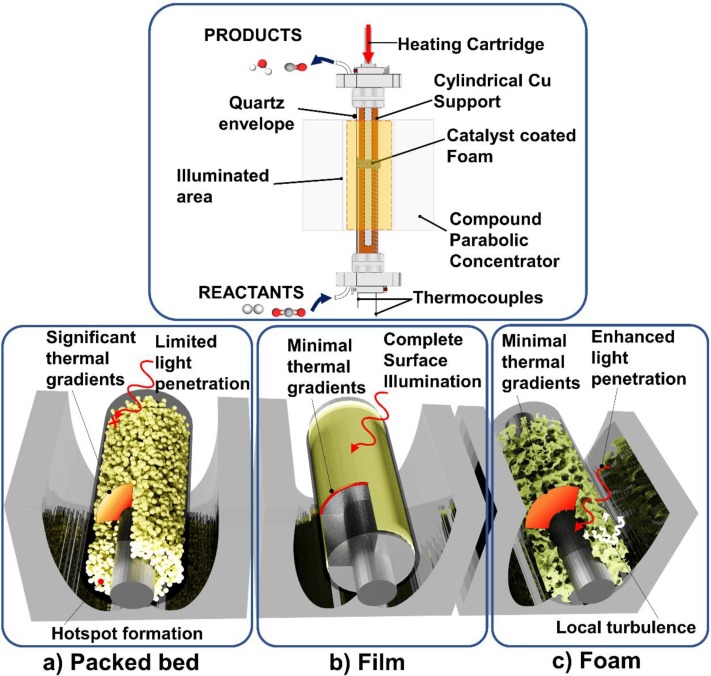To enhance the solar-to-chemical conversion efficiency of CO2 photocatalysis, light active materials need to be engineered into multiscale architectures that maximize photon capture and minimize optical losses. In this paper, Lourdes, Abhinav and coauthors developed a photocatalytic foam that helps achieve this goal by coating a uniform distribution and thickness indium oxide hydroxide nanorods film onto the internal surface of an oxidized nickel foam. Optimizing the size and density of pores of the photocatalytic foam enabled optimization of photochemical and thermochemical contributions to the rate for the solar reverse water gas shift. See full story at CEJ.
-
Recent Posts
- Congratulations to Geoff’s birthday paper of CO2 photocatalysis on Matter
- Could modified train cars capture carbon from the air? This team has a plan to make it happen
- Sand batteries that are dirt cheap
- Congratulations to Lu, Chengliang and Geoff on their recent publication in Nature Communications
- Congratulations to Wei and co-authors on their recent publication on silica in the Chem Catalysis
Recent Comments
Categories
Header Courtesy of Digital Westex

